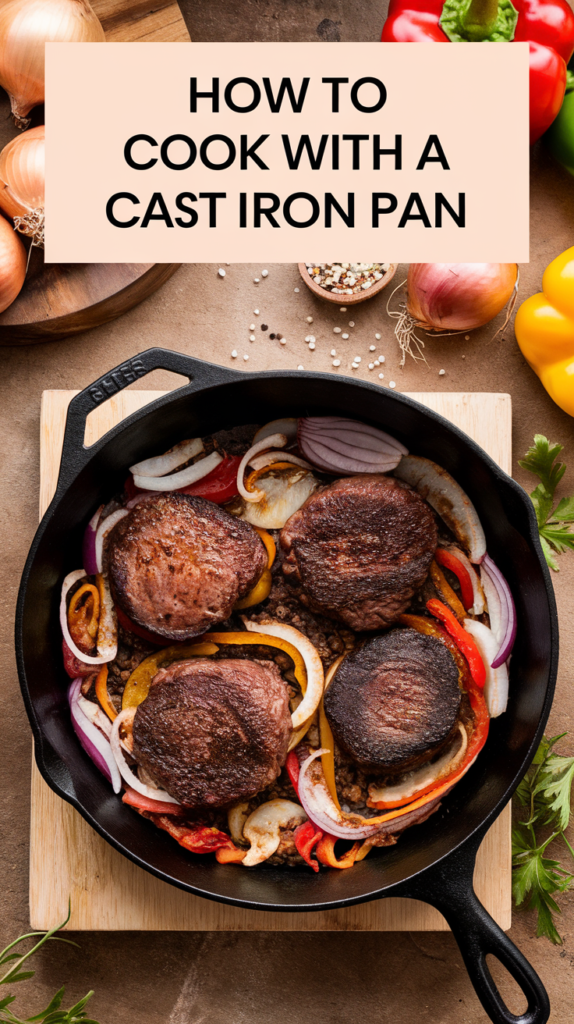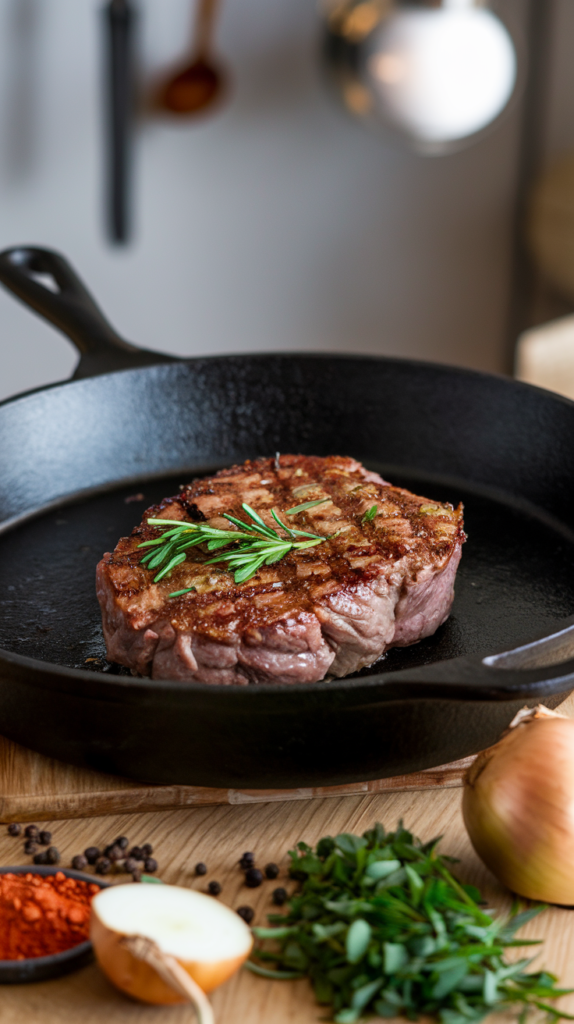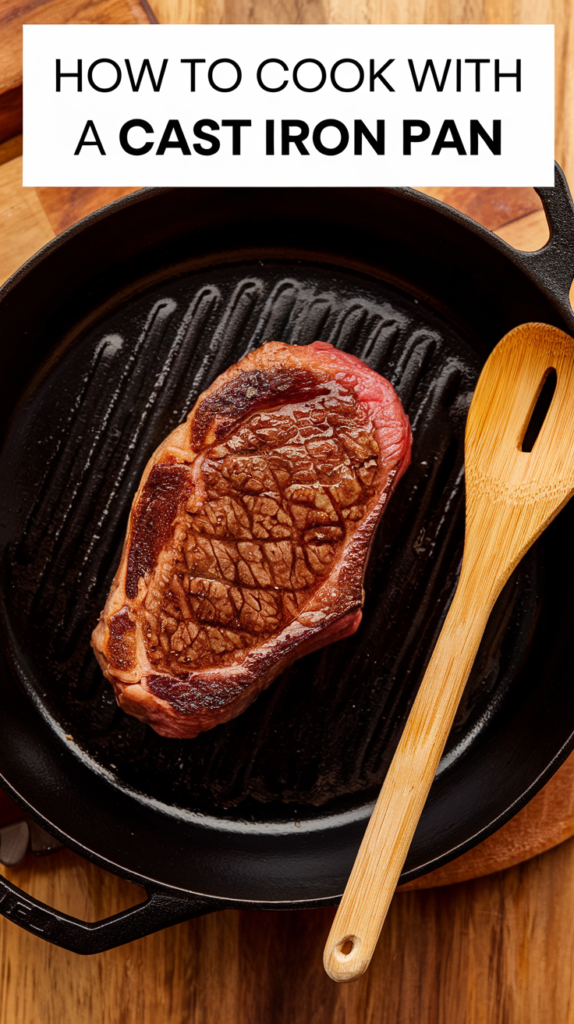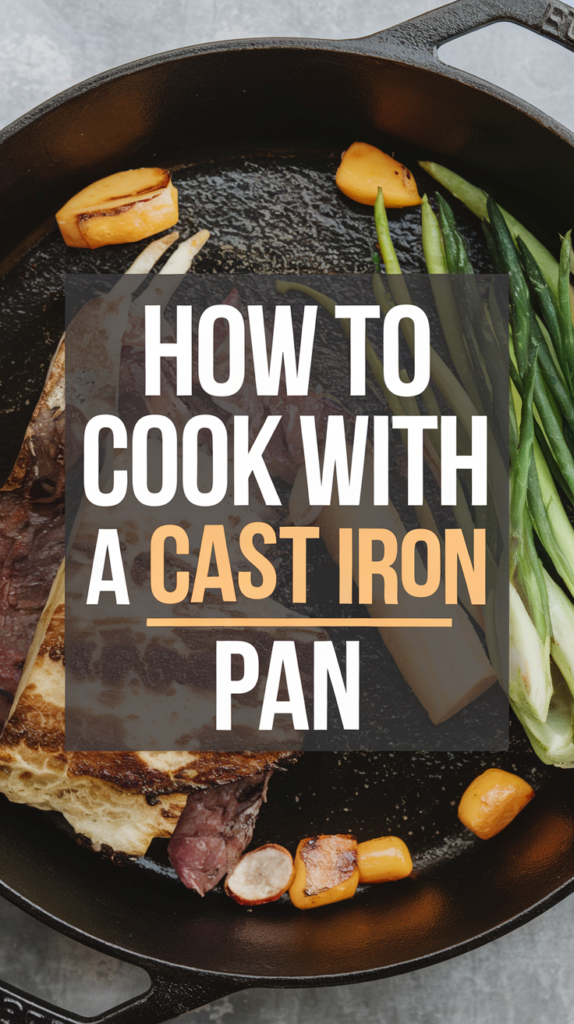Cooking with cast iron pans, both flat and ridged, can transform your kitchen experience. These versatile pans retain heat well and can be used on the stove or in the oven, making them perfect for a variety of dishes. Whether you’re searing a steak or baking cornbread, cast iron pans deliver great results.

To get the most out of your cast iron cookware, proper seasoning and care are key. Seasoning helps create a non-stick surface while preventing rust. You’ll find that a little maintenance goes a long way in keeping your pans in top shape.
Flat and ridged pans each have their unique advantages. Flat pans are great for pancakes and eggs, while ridged pans give that lovely grill mark on meats and veggies. Once you learn how to use them, you’ll see why so many chefs love cooking with cast iron.
Getting Started With Cast Iron Pans
Cast iron pans are a fantastic addition to your kitchen. They can handle high heat, provide even cooking, and last for years. Let’s explore how to choose the right pan, care for it, and set up your kitchen for success.
Choosing Between Flat And Ridged Cast Iron Pans
When picking your cast iron pan, consider the cooking style. A flat pan is perfect for pancakes, eggs, and even sautéing vegetables. It offers a smooth surface to maximise contact with your food.
On the other hand, a ridged pan is ideal for grilling meats and fish. The grooves allow fat to drain away, giving you those lovely grill marks and a nice sear. Think about what you cook most often to help you decide.
Seasoning And Caring For Cast Iron

Seasoning your cast iron cookware is essential. This process creates a natural non-stick surface and protects it from rust. Start by washing your pan with soap and water, then dry it completely.
Next, rub a thin layer of vegetable oil or melted shortening all over the pan. Heat it upside down in the oven (an oven heats more evenly than a stove top) at a high temperature (230C) for about 30 minutes. It may get smokey so make sure to ventilate your kitchen, and place a tray under the pan in case of any oil that drips. Let it cool, and repeat this process 3-4 time for a new pan.
Once you’re done, just let the pan cool down. It’s now ready for cooking.
Avoid soaking your cast iron and never put it in the dishwasher. If it rusts, scrub it with steel wool, season it again, and it will be good as new.
Essential Tools And Kitchen Setup
To get started, you’ll need a few tools. A good spatula is key. You might want to choose silicone or wooden ones to avoid scratching the surface.
Keep your kitchen organised. Ensure your pans are easily accessible. Store them stacked with cloth in between to prevent scratching. You might also want to have a dedicated place for seasoning supplies.
Finally, a sturdy oven mitt is a must. Cast iron retains heat well, so handling it safely is crucial. With these tools and a proper setup, you’ll be ready to enjoy cooking with cast iron.
Mastering Everyday Cooking Techniques With Cast Iron
Using cast iron pans can elevate your cooking game. From frying to baking, they offer excellent heat retention and even cooking. Here’s how to get the most out of flat and ridged cast iron pans.
Cooking With Flat Cast Iron Pans
Flat cast iron pans work great for a variety of dishes. You can use them for frying eggs, pancakes, or even browning meat.
Tips for Cooking:
- Preheat Your Pan: Always heat your pan before adding food. This helps prevent sticking.
- Use Oil: A thin layer of oil helps create a non-stick surface.
- Keep An Eye on Temperature: Cast iron retains heat well. Lower the heat as needed to avoid burning your food.
You’ll love how evenly your food cooks. Mastering this technique makes it easier to whip up delicious breakfasts or quick dinners.
Grilling And Searing On Ridged Cast Iron Pans

Ridged cast iron pans are perfect for grilling and searing. The ridges create those nice grill marks and allow excess fat to drain away.
Grilling Techniques:
- Preheat the Pan: Start on high heat to get a good sear.
- Season Your Meat: Use salt, pepper, or your favourite spices to add flavour.
- Don’t Overcrowd: Cook in batches if needed. Too much in the pan lowers the temperature and affects searing.
This method brings out the best flavours in meats and veggies. You’ll enjoy a great outdoor grilling experience right in your kitchen.
Baking And Creative Uses: From Cookies To Roasts
You might be surprised at the versatility of cast iron pans in baking. They can be used for cookies, bread, and even roasting meats.
Baking Tips:
- Use Parchment Paper: Line the pan for easy clean-up, especially with sticky cookies.
- Adjust Baking Time: Cast iron retains heat longer. Check your baked goods a few minutes early.
- Experiment with Recipes: Try cornbread or deep-dish pizza for something different.
With a bit of creativity, your cast iron can be your best baking buddy, giving your treats a unique flavour and texture.
Maintaining Top Performance And Extending Pan Life
Caring for your cast iron pans ensures they last for years. Proper maintenance is key to keeping your cooking experience enjoyable.
Care Tips:
- Clean After Each Use: Rinse with hot water and scrub gently. Avoid soap, which can damage the seasoning, if you do use soap make sure to season afterwards.
- Season Regularly: Apply a thin layer of oil after cleaning to maintain the non-stick surface.
- Store Carefully: Keep your pans in a dry place, and consider putting a paper towel between pans to prevent scratching.
By following these steps, you’ll keep your cast iron in top shape, ensuring it performs well for all your cooking adventures.


No responses yet